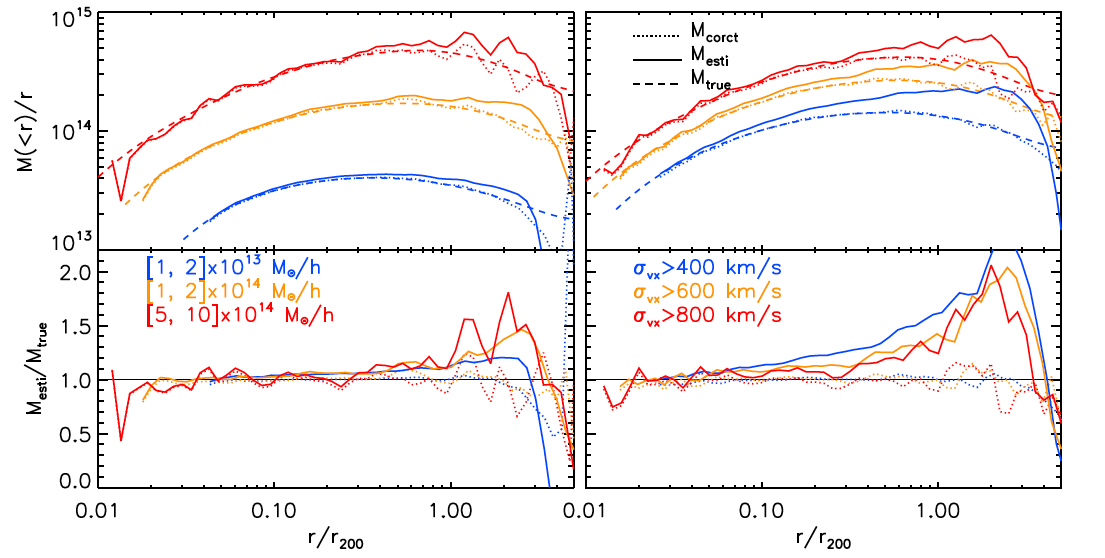Dynamical Mass of Stacked Galaxy Clusters
Galaxy clusters are thought to be dominated by dark matter and their hosted galaxies are bounded by their gravitational potential. Estimating the mass of dark matter clumps (haloes) is the first important step for using galaxy clusters to constrain cosmology. The Jeans' equation provides the basis for inferring the dynamical mass of haloes from the velocity dispersion of galaxies of stacked clusters and groups. The key is to find the unbiased relation between mass and velocity dispersion, the M-\sigma_vrelation. We have recently found that conventional assumptions made for the Jeans' equation lead to biases for the estimated mass using velocities, with the dominant ones being (1) spherical symmetry for the shape of clusters; (2) static assumption for the cluster centre; (3) time-independent matter flow at the outskirt. We have shown that once these correction factors are applied, we can recover the true mass of galaxy clusters, as illustrated by the following figure (Cai et al. in prep).

Figure 1. Top: The stacked halo mass profiles from Nbody simulations. The radius is expressed in units of r_{\rm 200}, the radius interior to which the density is 200 times the critical density as calculated from the mean mass of each stacked cluster sample. M_{\rm true}: true mass, M_{\rm esti}: estimated mass from velocity dispersions with conventional assumptions (spherical symmetry, statics halo centre, and time-independent infall), M_{\rm corct}: estimated mass with corrections developed in (Cai et al. prep). Bottom: Ratios between the estimated mass with (dotted lines) and without (solid lines) the corrections versus the true mass. Haloes are selected by their masses (left) and velocity dispersions (right) indicated by the legends. The biases for the estimated mass are successfully corrected.